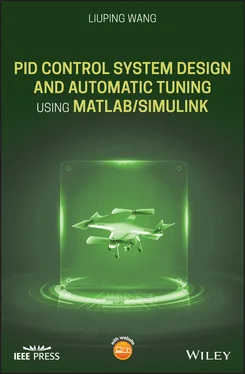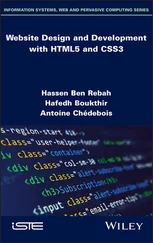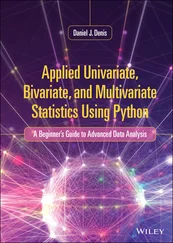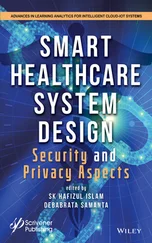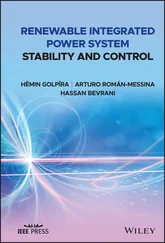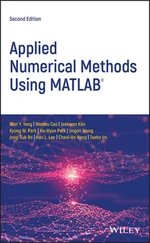This chapter has introduced the basics in PID control systems. It is important for us to understand the roles of proportional control, integral control and derivative control. The simple modification with the implementation of PID controller by putting the proportional control on output only reduces the overshoot in the step reference response. For some applications, avoiding the overshoot is important because the requirement is associated with the system's operational constraints while for other applications the overshoot is preferred if the PID controller is used in an inner-loop system (see Chapter 7). Additionally the derivative control should be implemented with a derivative filter to avoid amplification of measurement noise and the derivative control should be implemented on the output only to avoid the scenario of derivative ‘kick’.
Several sets of tuning rules have been introduced in this chapter. These tuning rules are very simple and easy to use if the system can be approximated by a first-order-plus delay model. However, they offer no guarantees on the closed-loop performance as demonstrated by the simulation examples. Some of the examples used in this chapter will be analyzed using the Nyquist stability criterion and sensitivity functions in Chapter 2.
1 Text books in control engineering include, Franklin et al. (1998), Franklin et al. (1991), Ogata (2002), Golnaraghi and Kuo (2010), Goodwin et al. (2000) and Astrom and Murray (2008).
2 Process control books include Marlin (1995), Ogunnaike and Ray (1994), Seborg et al. (2010).
3 There are many books published on PID control, including Astrom and Hagglund (1995), Astrom and Hagglund (2006), Yu (2006), Johnson and Moradi (2005), Visioli (2006), Tan et al. (2012). PID control of multivariable systems is discussed in Wang et al. (2008).
4 Tuning rules are compiled as a book (O'Dwyer (2009)). PID controller tuning rules with performance specifications derived from frequency response analysis are introduced in Wang and Cluett (2000).
5 The survey and tutorial papers on PID control include Åström and Hägglund (2001), Ang et al. (2005), Li et al. (2006), Knospe (2006), Cominos and Munro (2002) and Visioli (2012), Blevins (2012).
6 A web-based laboratory for teaching PID control is introduced in Ko et al. (2001), Yeung and Huang (2003).
7 The issues associated with derivative filters in PID controller are addressed in Luyben (2001), Hägglund (2012), Hägglund (2013), Isaksson and Graebe (2002), Larsson and Hägglund (2011).
8 Improving reference tracking and reducing overshoot is discussed for an existing controller in an industrial environment (Visioli and Piazzi (2003)).
9 Ziegler-Nichols tuning formula is refined in Hang et al. (1991) and for unstable systems with time delay in De Paor and O'Malley (1989). The ZieglerNichols step response method is revisited from the point of view of robust loop shaping (Åström and Hägglund (2004)). There is a set of tuning rules for integrating plus delay model in Tyreus and Luyben (1992), which was extended to PID controllers in Luyben (1996).
1 1.1 The following system is given to practice the Ziegler-Nichols tuning rules based on oscillation testing data to determine the PID controller parameters:Build a Simulink simulator using closed-loop proportional control with a controller for the system. The sampling interval is chosen to be 0.1 sec.Find the PI and PID controller parameters using Table 1.1.Implement the PI and PID controllers in Simulink with a step reference signal by putting both proportional and derivative control on the output only.What are your observations with respect to the closed-loop performance of the PI and PID control system?
2 1.2 In the majority of the tuning rules, the key step is to find a first order plus delay approximate model for step response testing data. Because the step response of a first order system () to a unit step input signal can be expressed aswe can determine the time constant using 63.2 percent of the rising time in the step response.Why does the 6.32 percent of the rising time correspond to the time constant ?Construct a graphic method to find a first order plus time delay model for the following system:Compare this first order plus delay model with that found in Example 1.7.Find the PID controller parameters using Table 1.2and compare the closed-loop simulation results with the ones given in Example 1.7. What are your observations?If the step response data contained severe measurement noise, would it be more difficult to determine the rising time?
3 1.3 The transfer function for the fired heater system with high operating condition introduced in Section 1.5.2is given as (1.61)Find the first order plus delay approximate model for this transfer function using the graphic method in Section 1.3.2. The sampling interval is chosen to be 1.Determine the PID controllers using Tables 1.2– 1.6.Evaluate their closed-loop performance by simulating their closed-loop unit step responses. What are your observations in terms of closed-loop performance with respect to the tuning rules?
4 1.4 The transfer function for the fired heater system with low operating condition introduced in Section 1.5.2is given as (1.62)Design three PID controllers for this system using IMC-PID controller design equations shown in (1.47)where the desired closed-loop time constant , 30 and 40 respectively.Evaluate the closed-loop control system performance for the three PID controllers by simulating the closed-loop unit step response with sampling interval sec.What are your observations of the closed-loop performance when the desired closed-loop time constant increases?
5 1.5 The two transfer functions obtained from the fired heater system are drastically different at the two operating conditions (see (1.61)–(1.62)). Hence, the PID controllers are different for the two operating conditions. Assume that we would only use one PID controller for both operating conditions.Design IMC-PID controller () for the fired heater system at high operating condition using with .Evaluate the closed-loop performance by simulating the two PID control systems: (1) and ; (2) and , respectively.Let denote the PID controller found from Problem 1.4 with . Evaluate the closed-loop performance by simulating the two PID control systems: (1) and ; (2) and .Based on the simulation studies, which controller should we recommend?Increase the desired time constant to 40 and repeat the evaluations. What would be the recommendations for the choice of ?
1 1 This polynomial equation is called a closed-loop characteristic equation.
2 2 This PI controller was designed using frequency response data in Wang and Cluett (2000).
3 3 We evaluate the steady-state gain of the transfer function by letting and calculating the value of the transfer function.
4 4This slow disturbance rejection problem will be analyzed using sensitivity analysis in Problem 2.8.
Конец ознакомительного фрагмента.
Текст предоставлен ООО «ЛитРес».
Прочитайте эту книгу целиком, на ЛитРес.
Безопасно оплатить книгу можно банковской картой Visa, MasterCard, Maestro, со счета мобильного телефона, с платежного терминала, в салоне МТС или Связной, через PayPal, WebMoney, Яндекс.Деньги, QIWI Кошелек, бонусными картами или другим удобным Вам способом.
